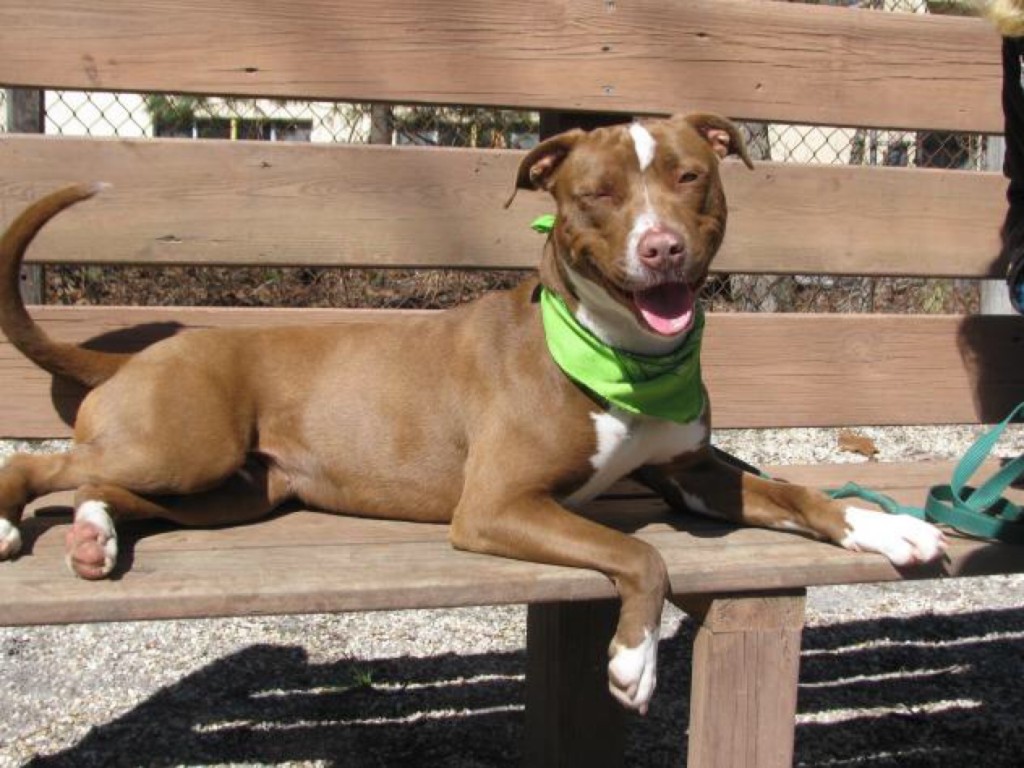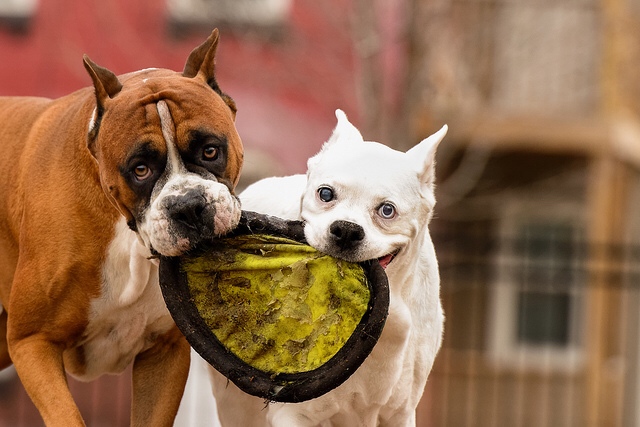Table of Contents
Dog parks can be a great way to socialize your pup and get them some exercise at the same time. But because dog parks are shared spaces, there are some things you should know before you leash up Fido at head out for a romp. When all visitors follow proper dog park etiquette, it helps create a safe, clean, and fun environment for pets and pet parents alike.

Deciding whether or not to visit the dog park
There are several scenarios in which your pup is better off getting exercise in other ways than by visiting the dog park.
Leave a sick or unvaccinated dog at home
Because there are so many different dogs from different environments mixing in one place, the dog park can be a hothouse of infectious agents. Parasites like hookworms, roundworms, giardiasis, and coccidiosis thrive in feces and shared water bowls. If you think there is even a chance your pet could be infected with a contagious disease or parasite, stay at home.
Related posts
Make sure your dog is up-to-date on all vaccinations. Basic vaccinations all dogs should have include distemper, rabies, hepatitis, Bordetella (kennel cough), parvovirus, and parainfluenza. Some vaccines require booster shots, so it’s best to schedule yearly vet appointments to keep your pet fully vaccinated.
Don’t bring your intact dog
If your dog isn’t neutered or spayed, do not bring them to the dog park. An unneutered male is a particular target, and a female in heat can most certainly come home pregnant. Also, do not bring a pregnant dog into a dog park.
Be mindful of your pet’s age and personality
Don’t bring puppies under four months to the park. Young dogs’ immune systems aren’t fully developed and they can catch all sorts of diseases. Dog parks are breeding grounds for intestinal parasites, parvovirus, and kennel cough.
Know your pet’s personality. Nobody’s dog is perfect but be honest when evaluating your dog’s temperament. Dog parks can be overwhelming for anxious or shy dogs. If you have doubts about how your dog will react around other dogs, it’s safer to avoid dog parks and take them hiking or playing fetch instead.
Some dogs are better off getting their exercise other ways. If you answer yes to any of the following, it’s wise to refrain from bringing your pet to the dog park.
- Is your pet younger than four months?
- Is your dog in heat?
- Are you uncertain about your pet’s current health status?
- Is your pet shy or easily frightened, especially around other dogs?
- Has your dog ever had problems bullying or being aggressive to other dogs?
- Does your dog not respond to your commands?
- Do they have difficulty reading other dogs’ signals?
- Does your dog tend to rush up to other dogs and overwhelm them?
If you find the dog park is not an option for your pet, don’t worry, there are many other types of exercise you can do. Swimming, walking or jogging, playing fetch or tug-of-war, and hiking can all get you and your dog moving.

Dog park rules and etiquette
After choosing a dog park and preparing your dog with basic commands (many trainers say your dog needs those recall skills first), you’ve got one last thing to go over – the basic guidelines of all things proper at the park.
Keep your pet leashed until inside the off-leash area
While the area inside the dog park may be safe to release your dog, it’s important to have your pet on a leash at all times when outside the park. Bring a sturdy leash and collar with you whenever you visit the park.
Make sure your dog is wearing a collar with an ID tag
Make sure your dog is wearing an ID tag in case they escape from the dog park. Larger dog parks also pose the possibility of your dog becoming lost, so an ID tag is always smart.
Pick up after your pet
It goes without saying that as a pet parent you are responsible for any little presents your dog might drop while you’re at the dog park. Some facilities might have baggies available, but always bring your own just in case. This helps keep the park clean and enjoyable for everyone.
Keep a close eye on your pet
Be sure to supervise your pet at all times. Never leave your dog unattended in a dog park, especially when there are other dogs around. Pay attention, stay off your phone and if having a conversation, always be aware of where your dog is, what is happening around them and how they are behaving.
No dog likes a bully, so always supervise your dog and step in before the energy escalates, it gets too intense, and a dog gets hurt. Signs that your dog could be in a potentially dangerous situation are stiff body language, stalking, a dog being chased by more than one dog, turning away from another dog, cowering, and play escalating in intensity or lasting too long. If your dog appears to be unhappy or is becoming a nuisance for any reason, then it’s time to leave.
Establish great recall before taking your dog to the park
You don’t have control over how other people train their dogs. When taking them to a dog park keep in mind that you are exposing them to many different personalities, and you can’t predict what could happen.
It’s important to establish great recall with your dog before taking them to a dog park. If you can’t confidently call them to you if you see a potentially dangerous situation, it’s not a good idea to take them to a dog park. Use a whistle when training your dog to come when called as it can help them respond more quickly in an overwhelming situation.
Bring your own water bowl
Bringing your own water and bowl is essential for pet parents who are dog park regulars. Communal water bowls can host many types of parasites that can be tricky and expensive to treat. Be safe and don’t let your dog share with others. Collapsible water bowls work great so that you can give your dog a drink, then pick it up so that other dogs don’t use it.
Don’t bring toys or balls to the dog park
Many dogs love to play fetch but can be ball possessive and if another dog runs over to join in the fun it could cause a fight. Even if your dog doesn’t mind sharing, another dog could be ball possessive, and grab the ball, then attack your dog when they attempt to get their ball back or play with them. The last thing you want to do is start a fight at the dog park, so keep your tennis balls and squeaky toys at home.
Be aware when giving your dog treats
If you like to give your dog treats at the dog park, be aware of the other dogs. It’s best to give your dog a treat when other dogs aren’t close to you. Keep in mind that if a treat drops on the ground this could start a fight. Also, some dogs are food possessive, and giving your dog a treat with another dog beside you could start a fight.
What to do if other dogs behave badly
- Everyone has their own training style with their dog, so keep this in mind when you are around other dogs.
- It’s always best to ask the pet parent how they would like you to handle something. For example, if you are talking to someone and their dog jumps on you, ask what they would like you to do or say.
- Not everyone pays attention to their dog’s behavior at a dog park. If you don’t know who the dog belongs to, and you have no choice but to address a situation, use your best judgment, and respond with the best intentions of the dogs involved.
What to do if your dog behaves badly at the park
- If your dog is bullying or annoying another dog, it’s important to respond as confidently and calmly as possible. Your energy and emotions will affect the situation and you don’t want to escalate the behavior by yelling or being upset with your dog.
- Step into the situation, get between the dogs, put your dog on a leash and remove them from the dog park.
- Remember that your dog was behaving either because they don’t understand boundaries and how to read signals from other dogs and need help to learn. Or that they responded due to feeling anxious, stressed, and/or overwhelmed and responded in the only way that dogs can, by exhibiting their feelings physically. Don’t reprimand them because they won’t understand why they are in trouble. It’s best to think about the situation and try to see it from your dog’s perspective and understand why they behaved like that so that you can assess what to do differently and if they need help.
If your dog has a bad experience at a dog park, how long should you wait to go back?
- Every dog is unique. It’s important to take into consideration your dog’s personality, what makes them stressed, and how they deal with stress.
- Some dogs can experience a traumatic event and after a few weeks or months, they no longer exhibit stress in a similar situation.
- Dogs who are more sensitive to their environment, more emotional, and take longer to learn and process may never be able to return to the dog park. For these sensitive dogs taking them back to the dog park, where the trauma began, would be too much for them, and could cause them to get triggered and essentially have the equivalent of a panic attack.
- Before taking them back to the dog park, have a play date with another dog they are familiar with and watch their behavior to determine if they are ready or not.
- If your dog has increased their reaction towards other dogs when out on walks, like lunging and barking, since the traumatic event, this is a sign that they will not feel safe or comfortable around other dogs.
Conclusion
Dog parks are great ways to provide your pet with exercise and new playmates. Dogs benefit from both the exercise and the social time they get to spend with other dogs. When you’re at a public dog park, it’s important to be mindful of others and their pets; not all dogs are as well-behaved as yours, and even your perfect pooch may not play so nicely around others. Use common courtesy and follow any posted rules at the park.









